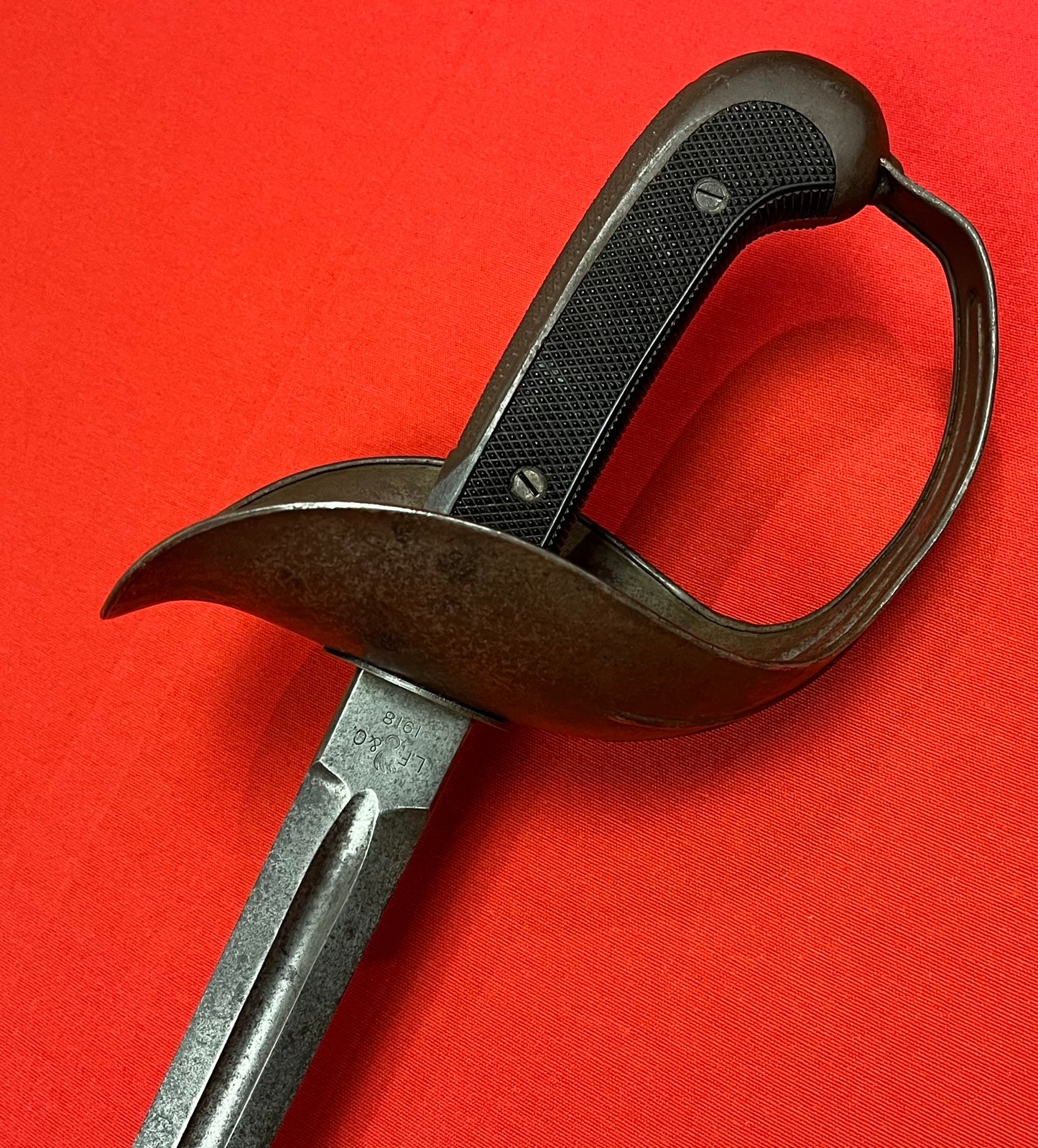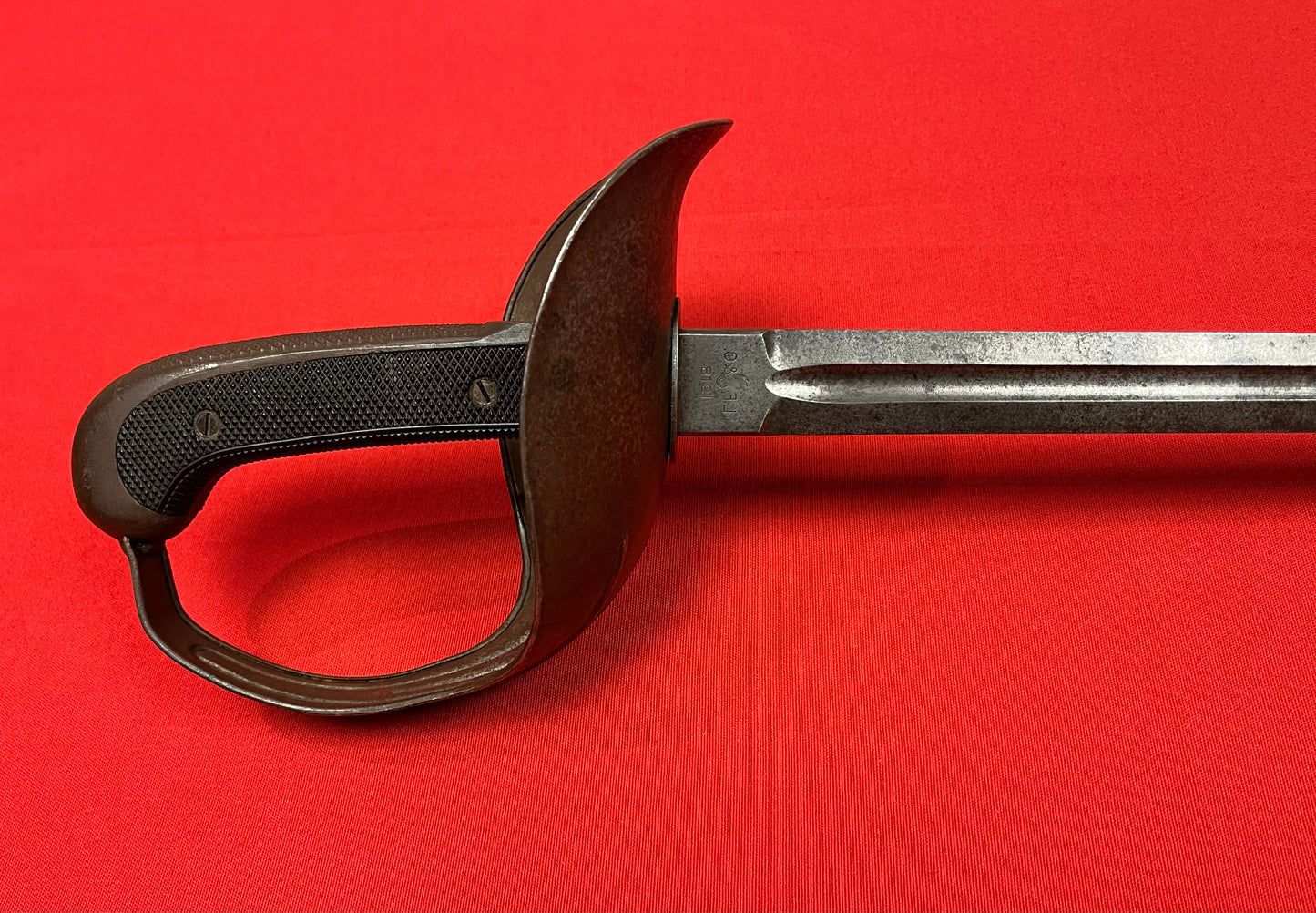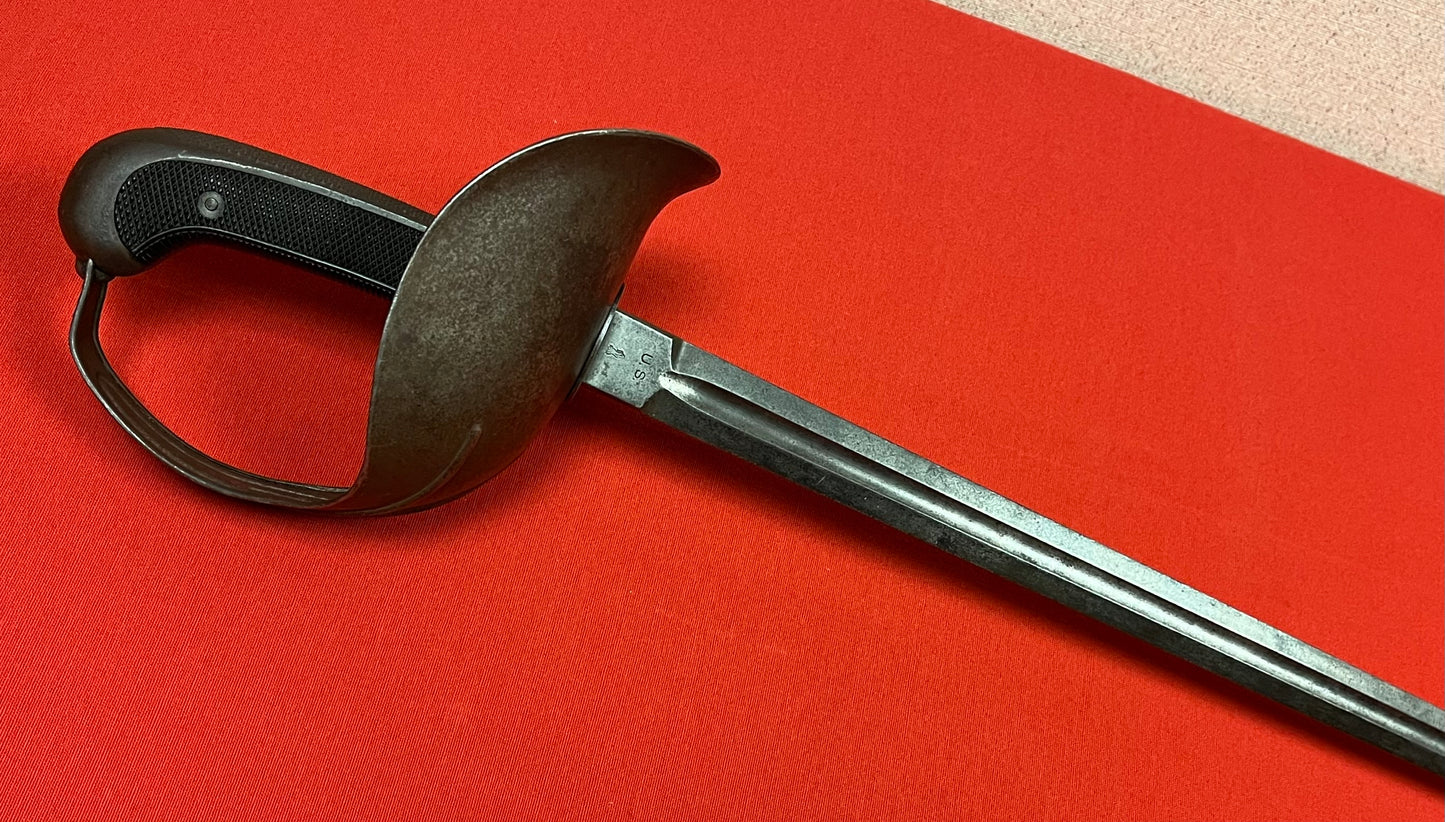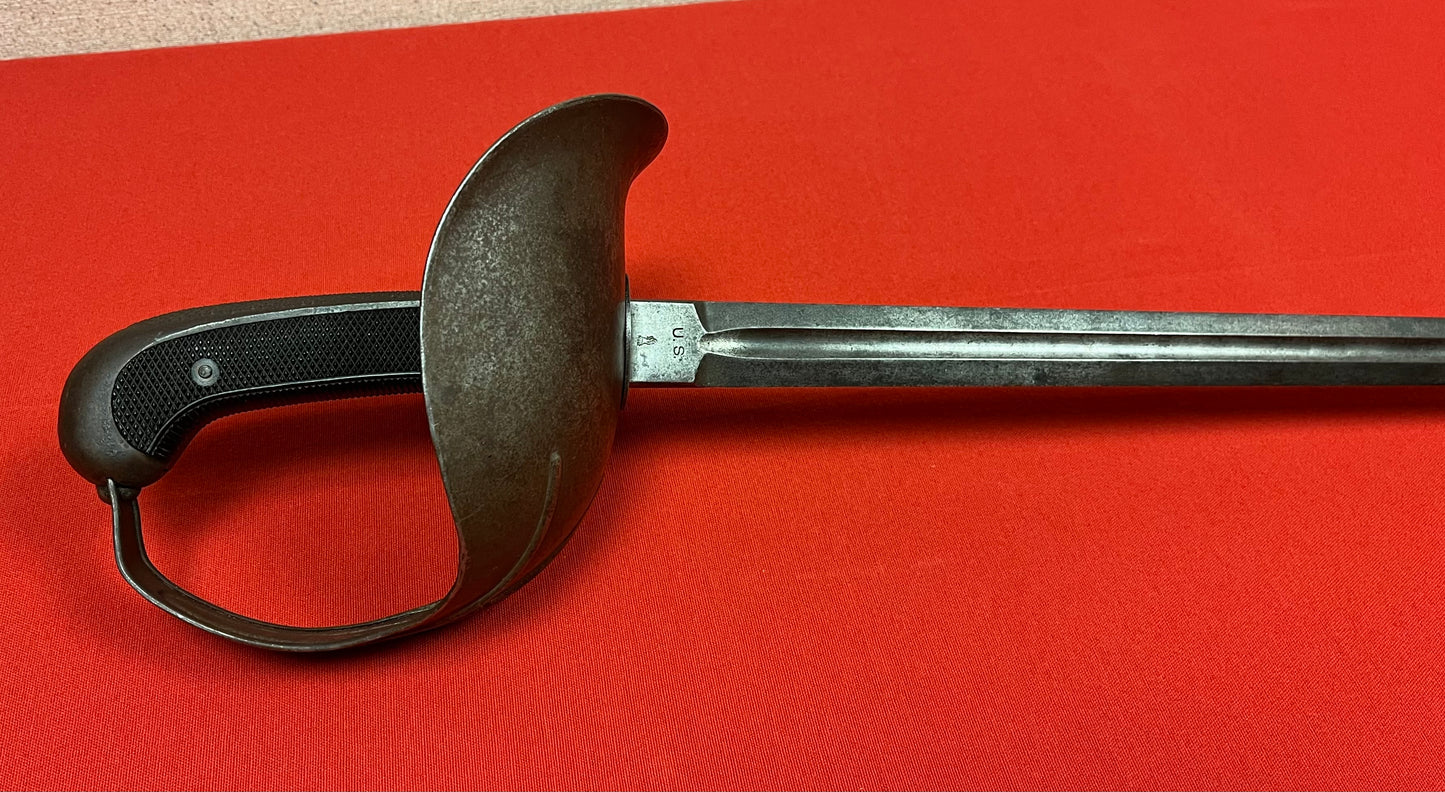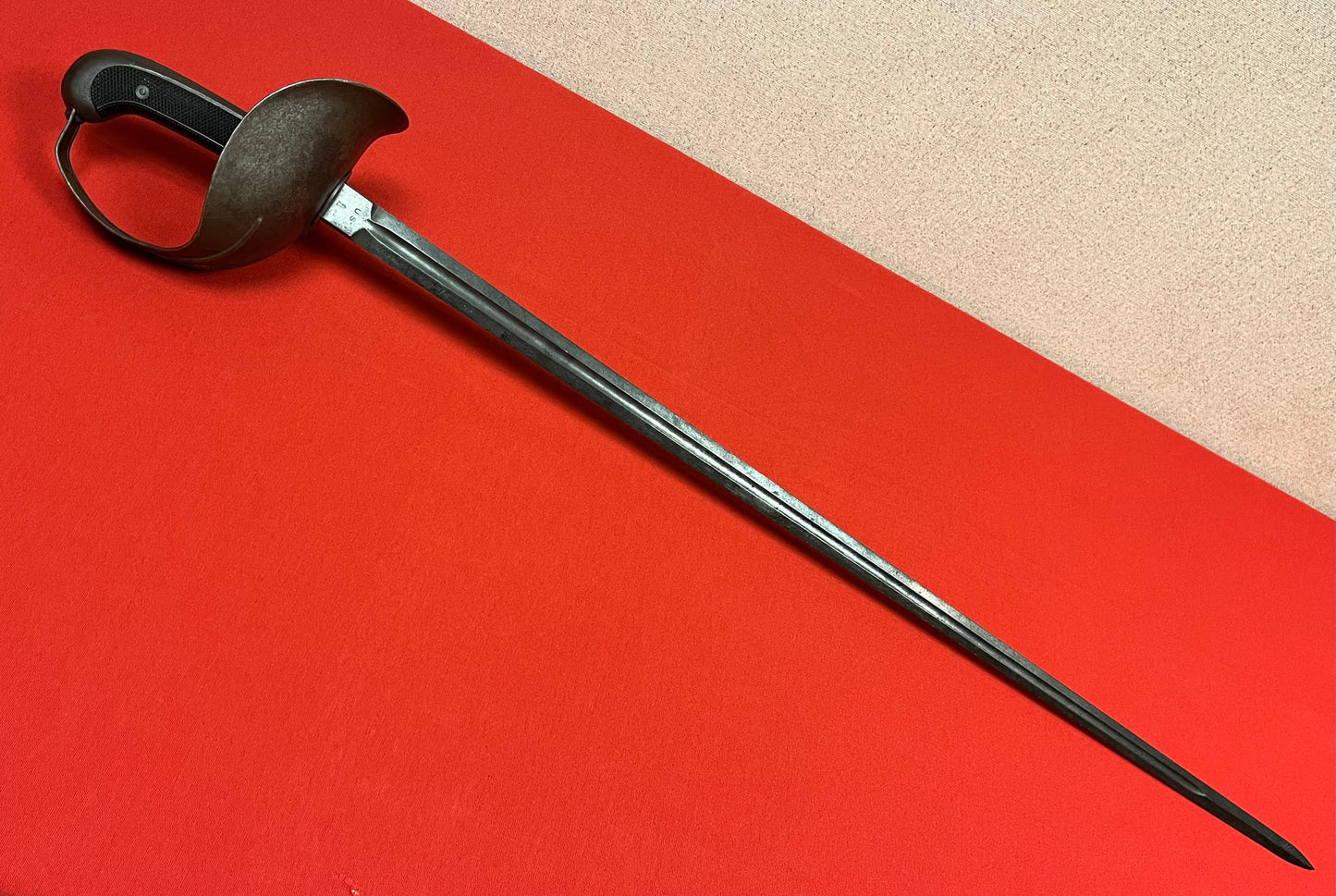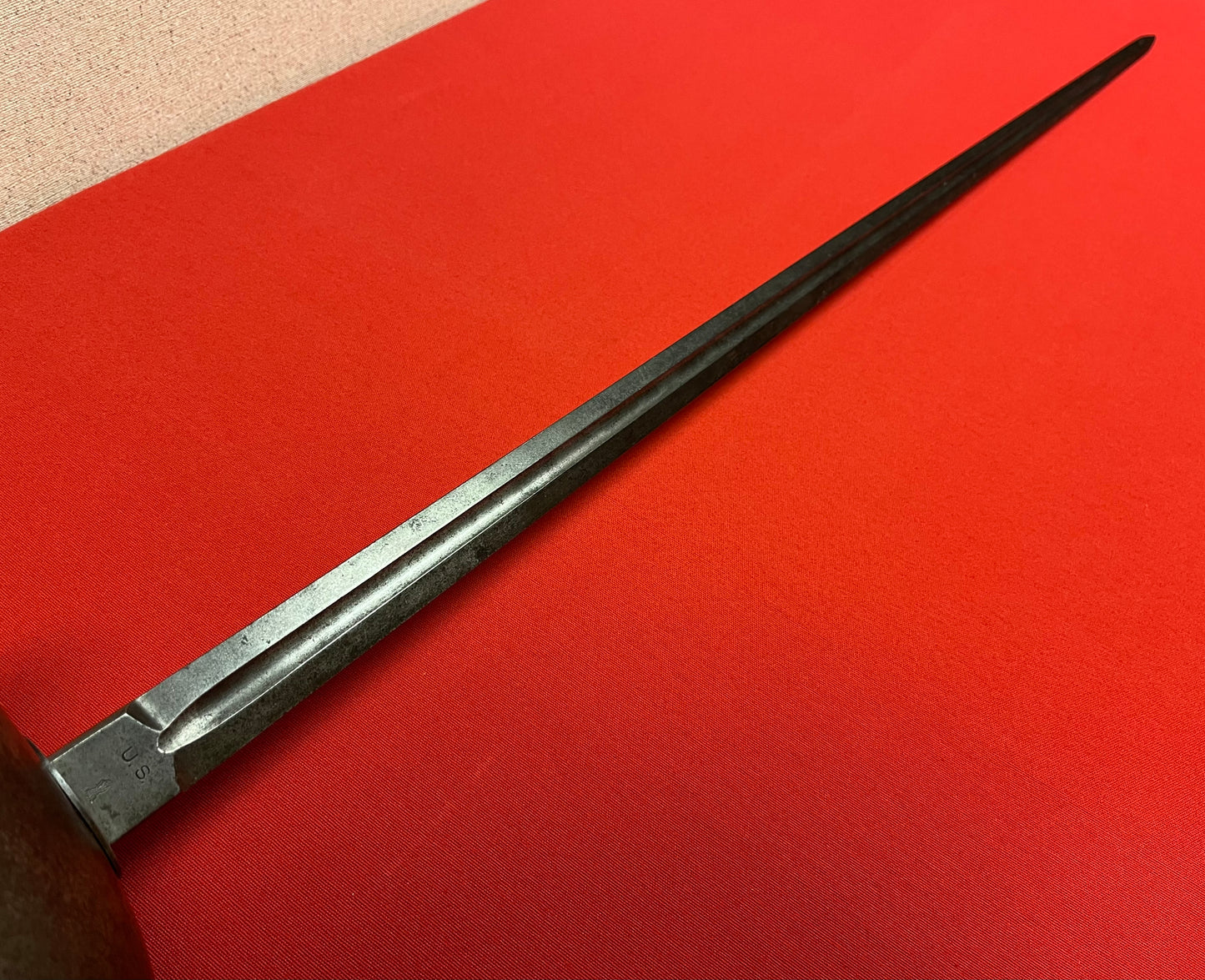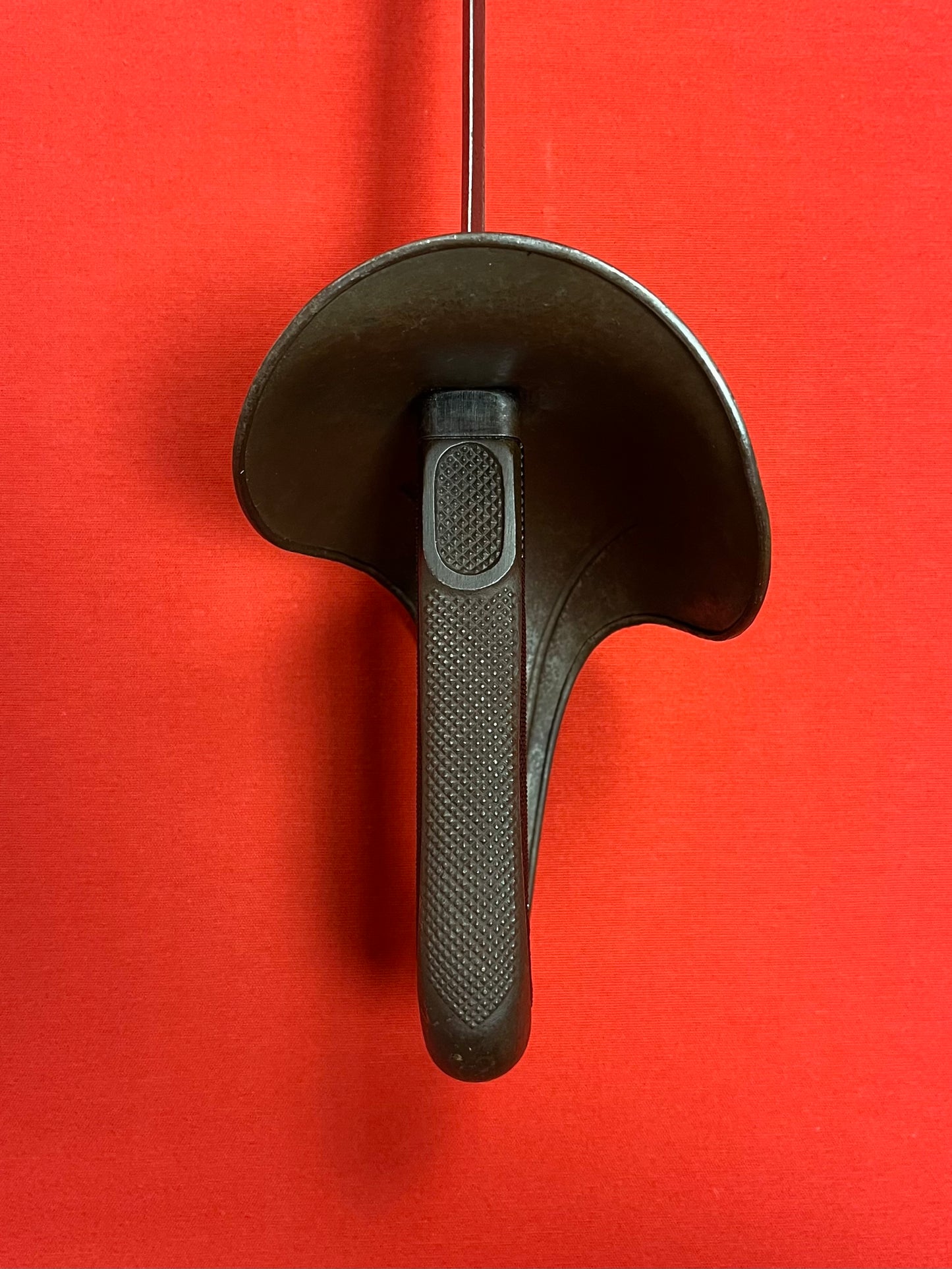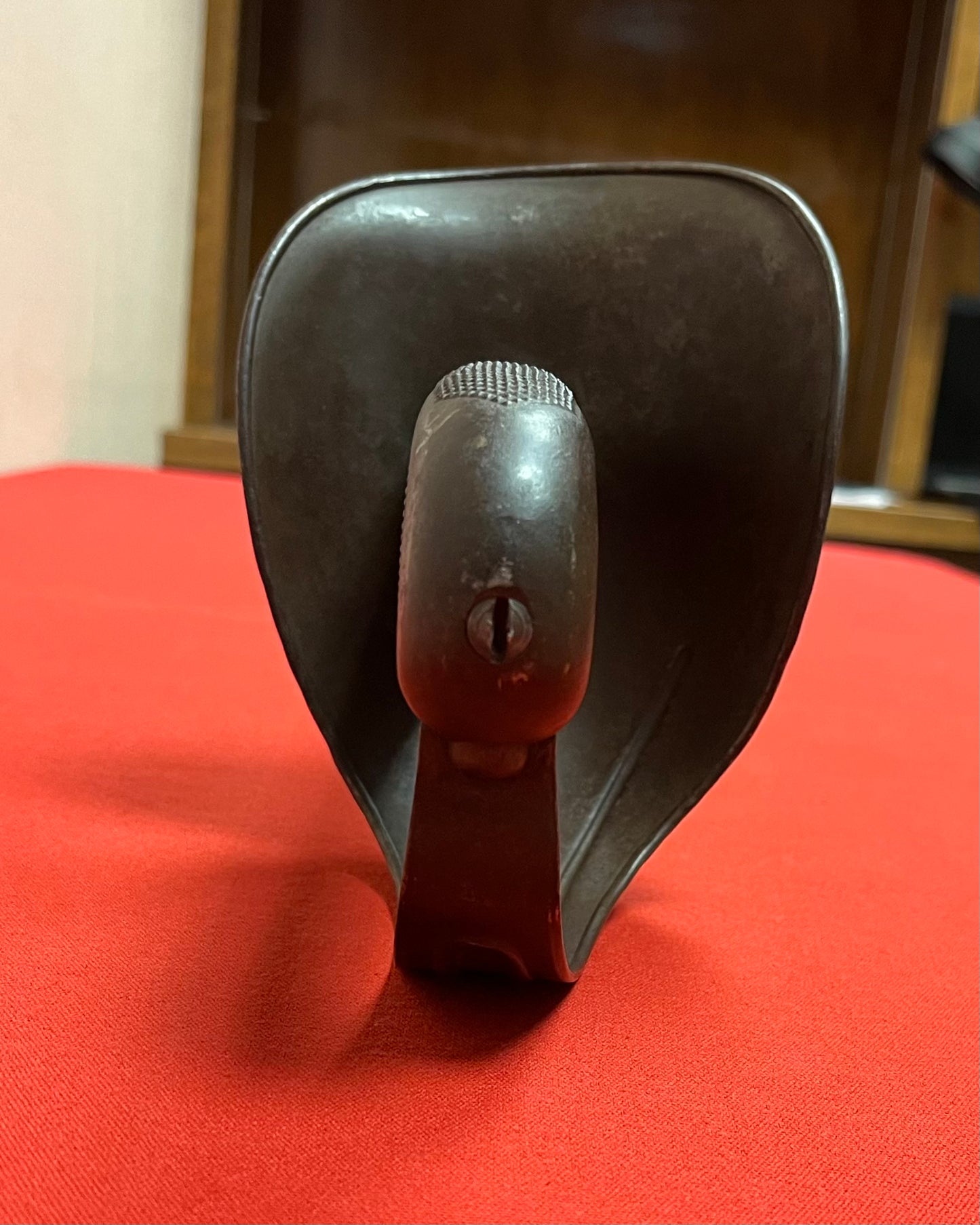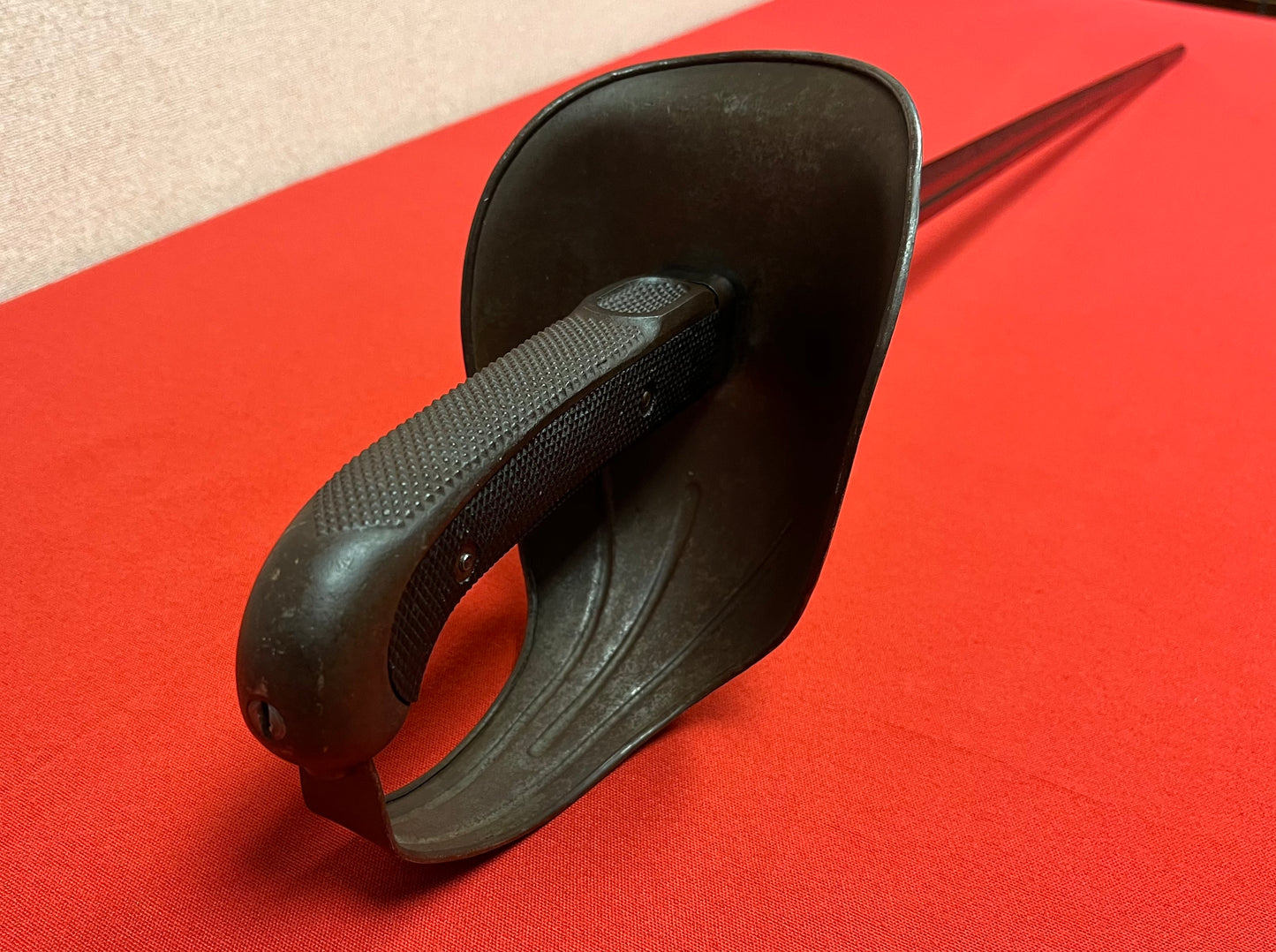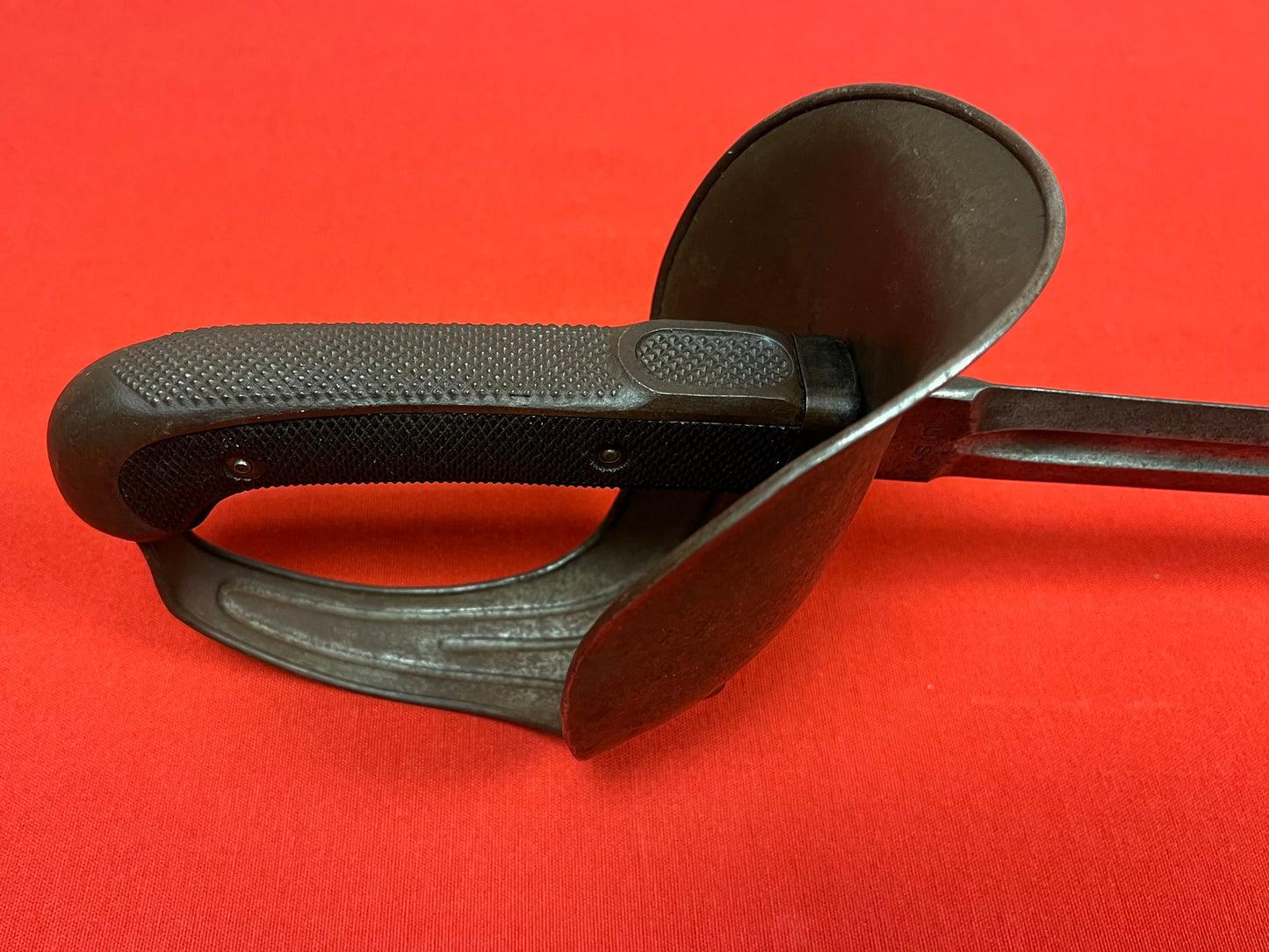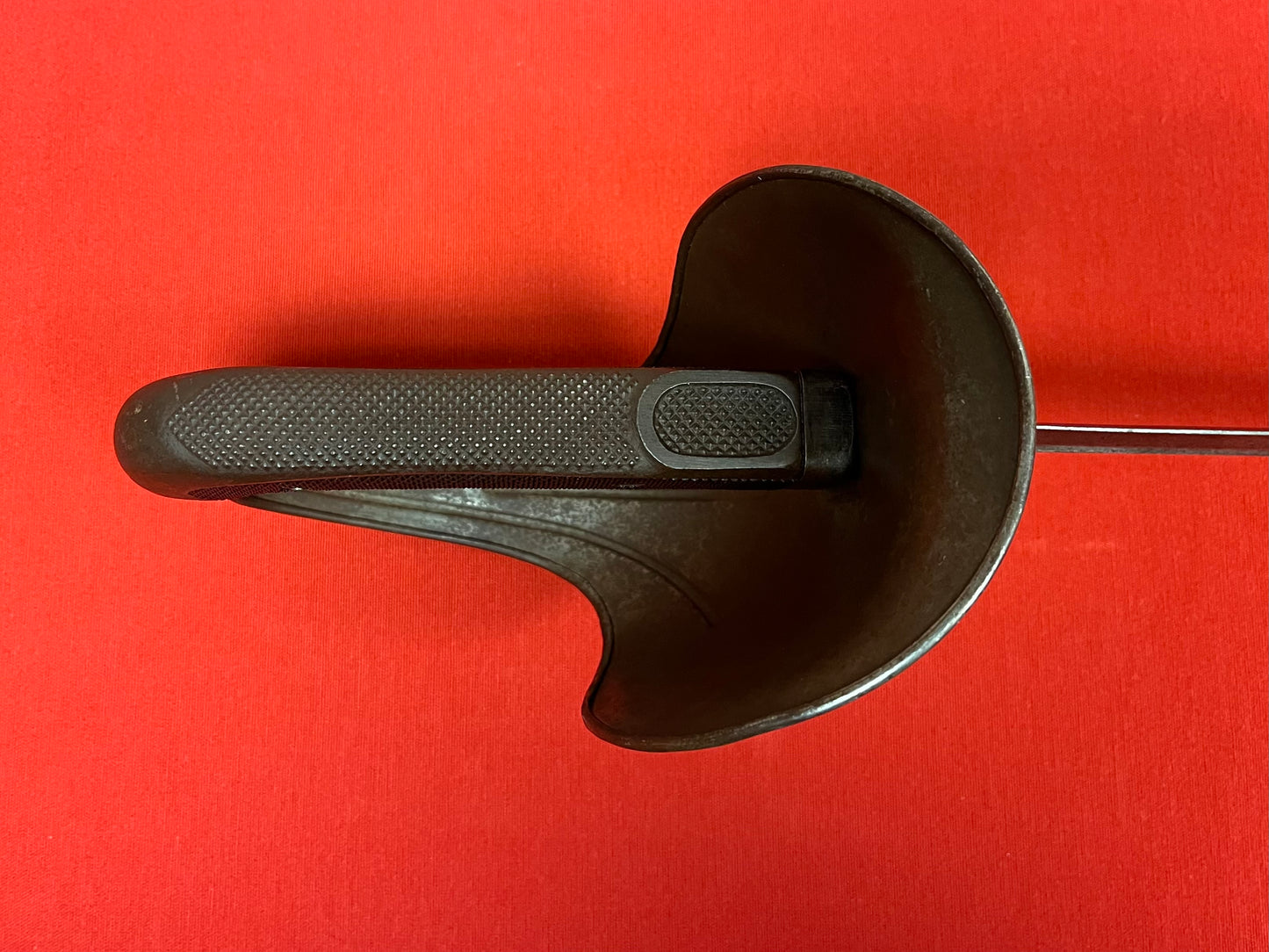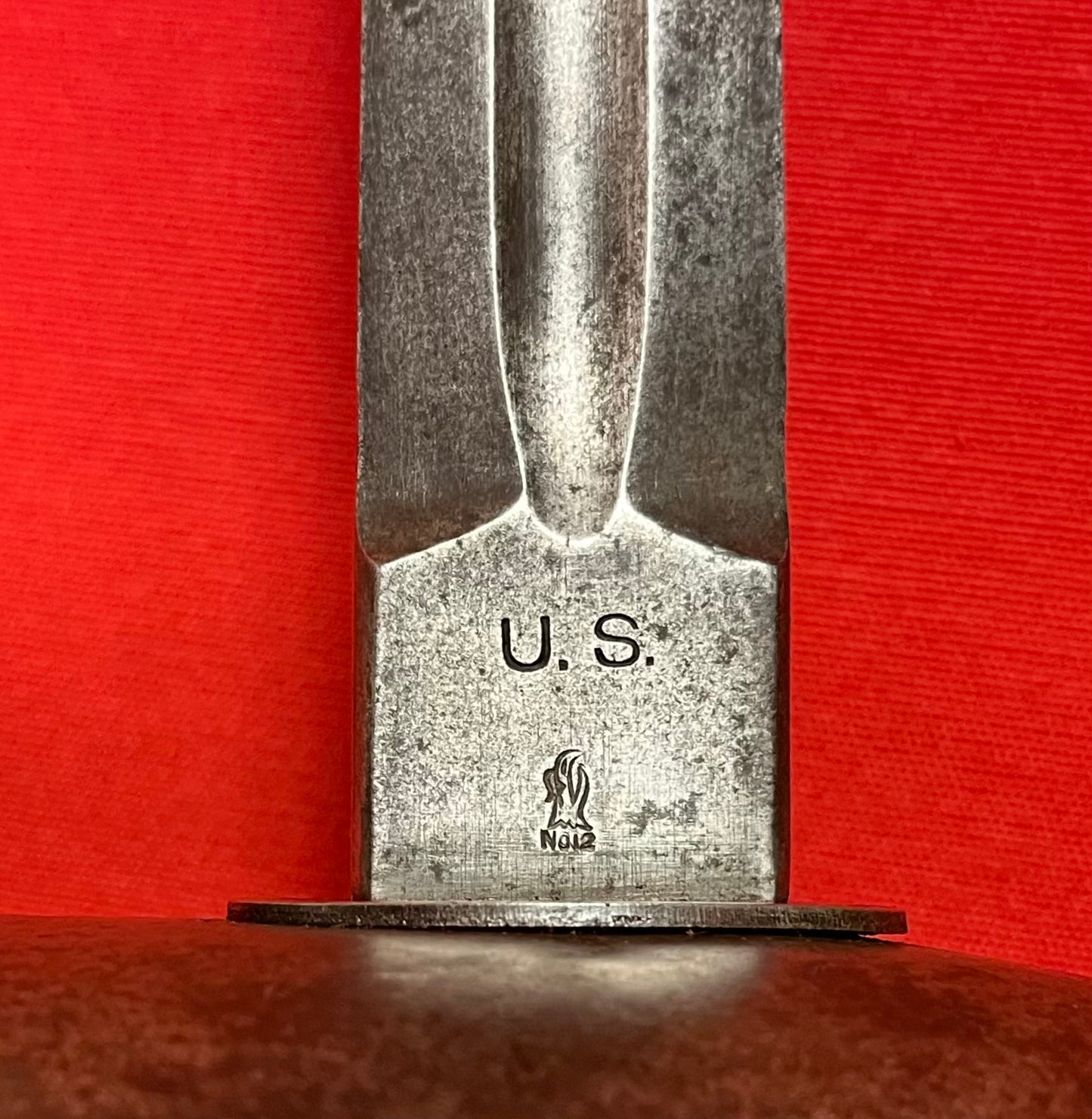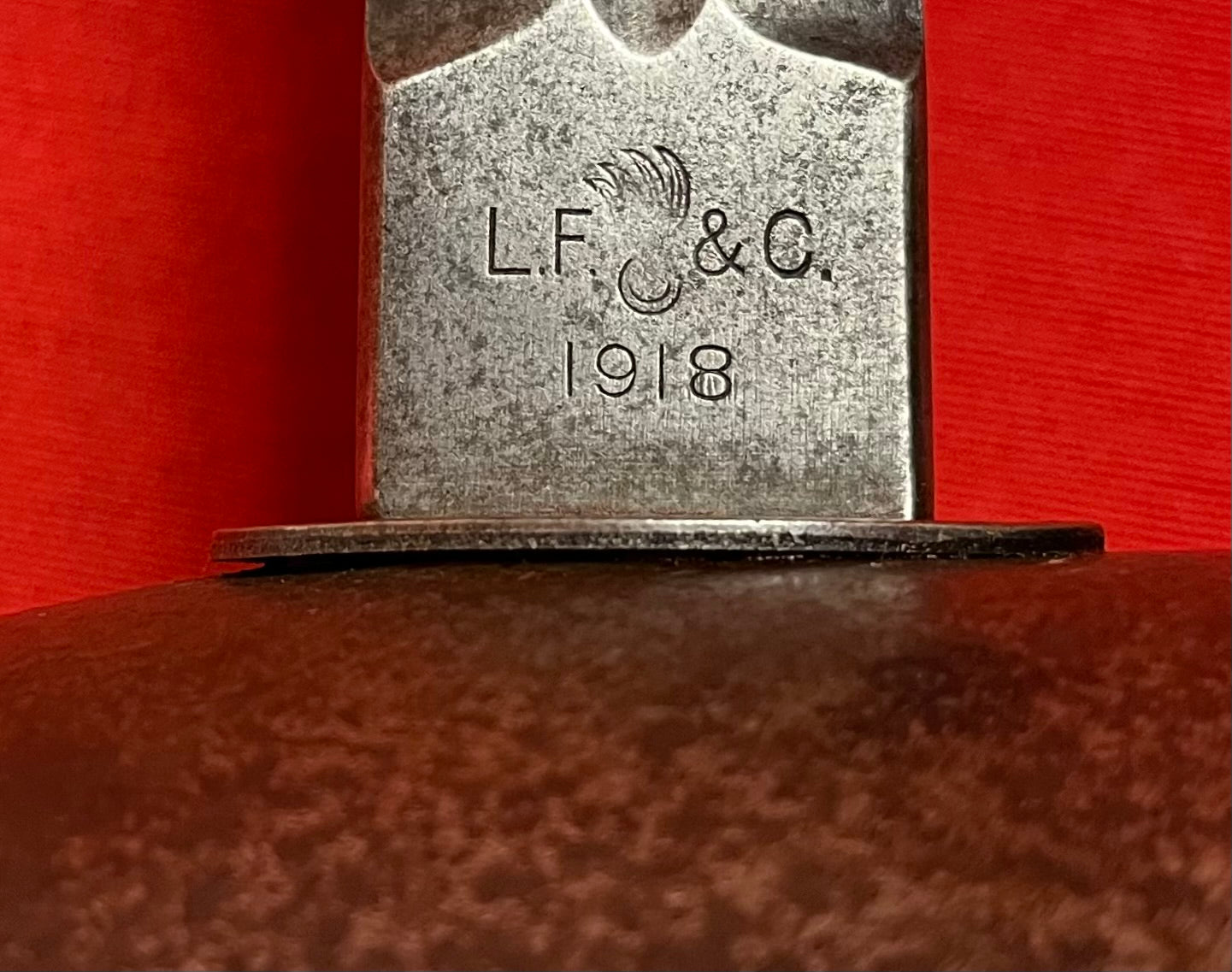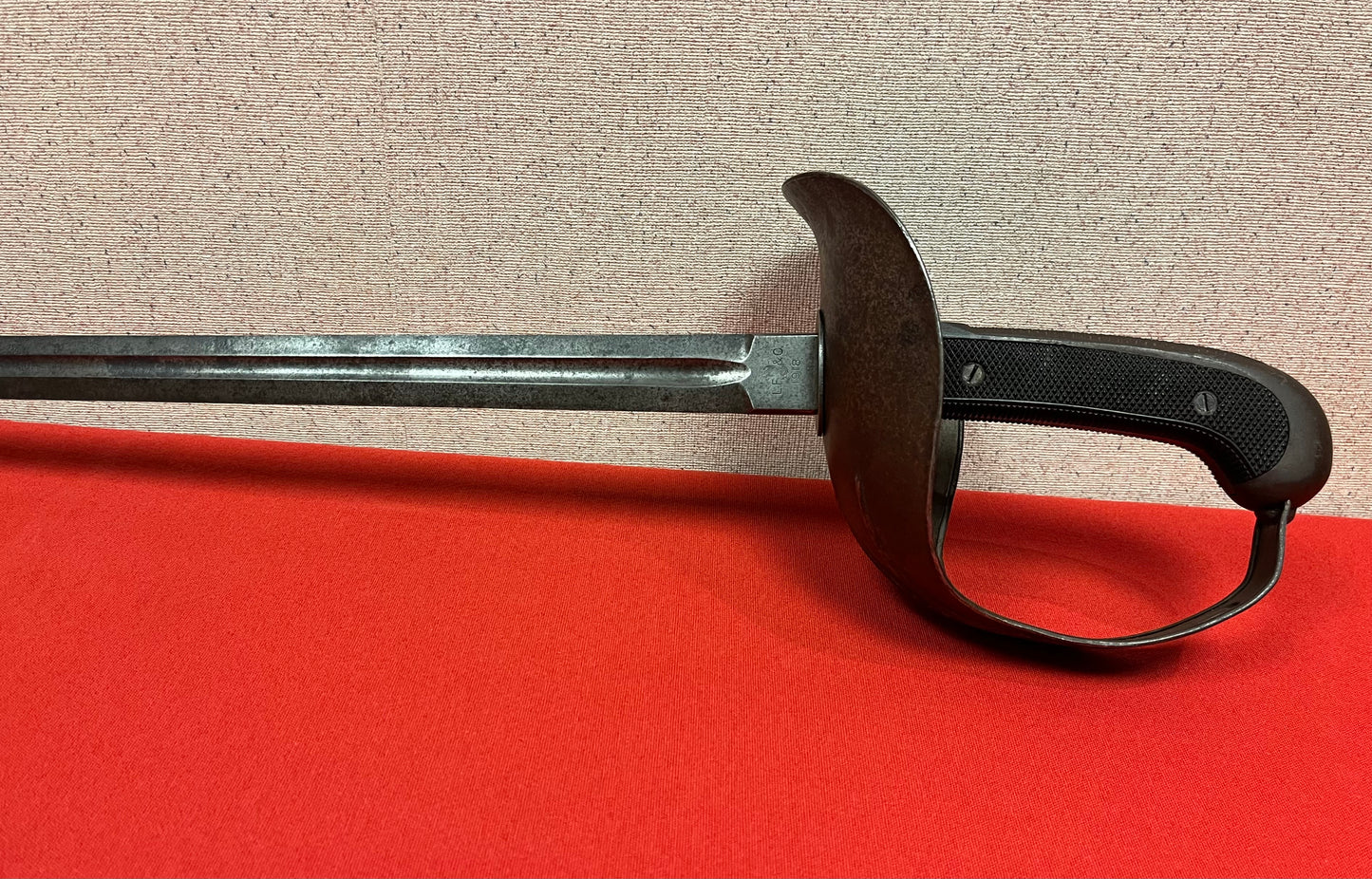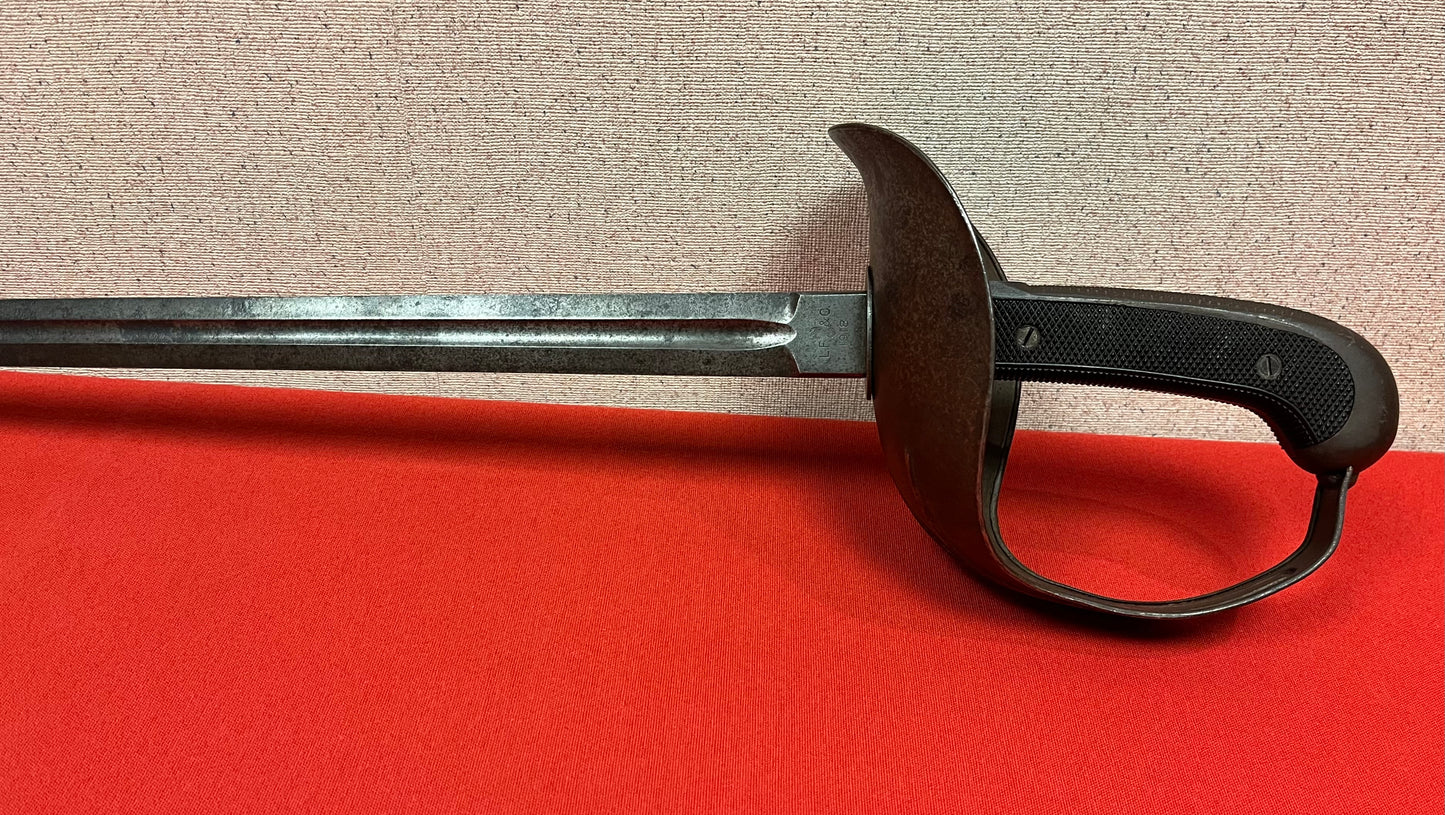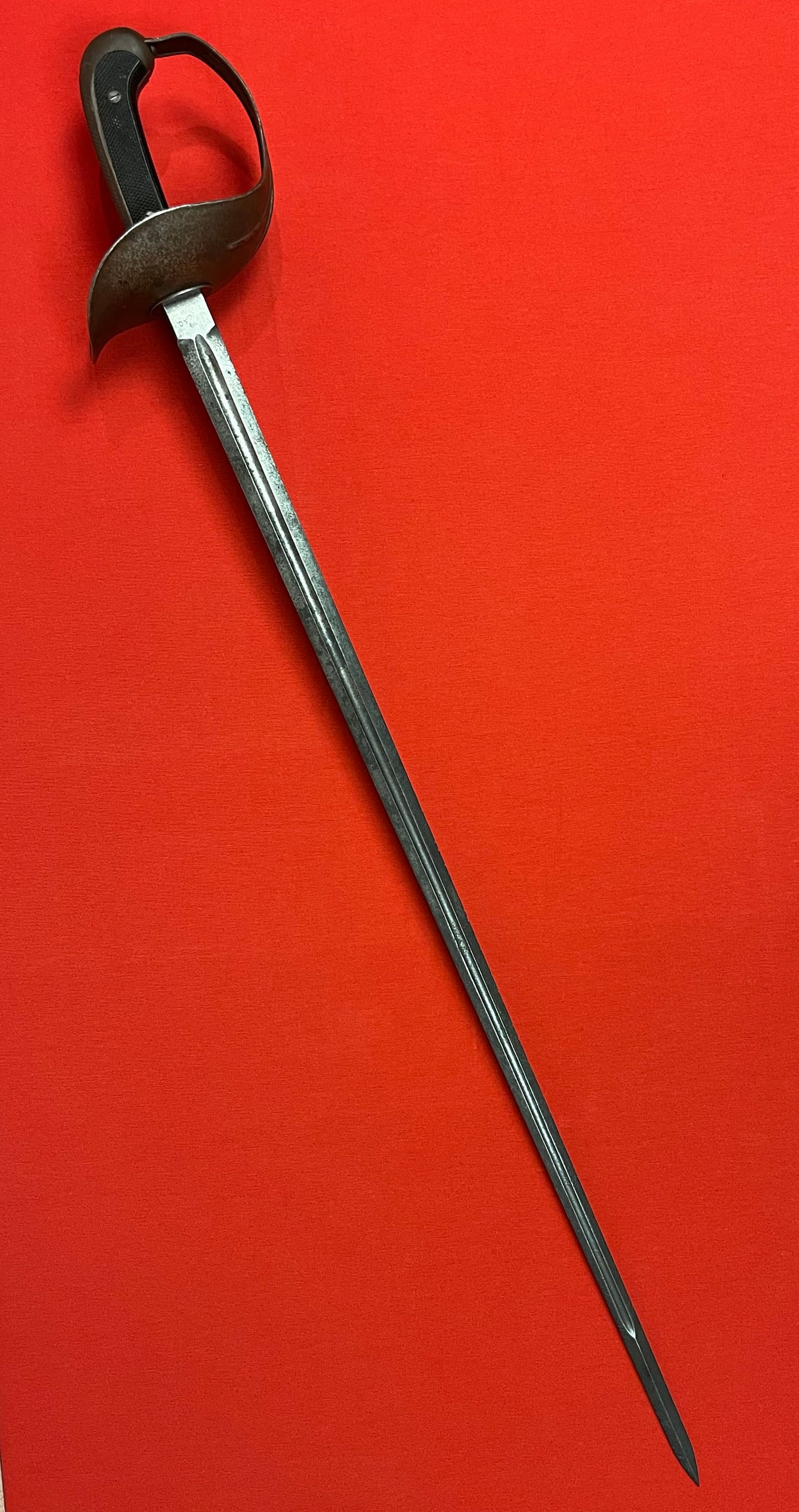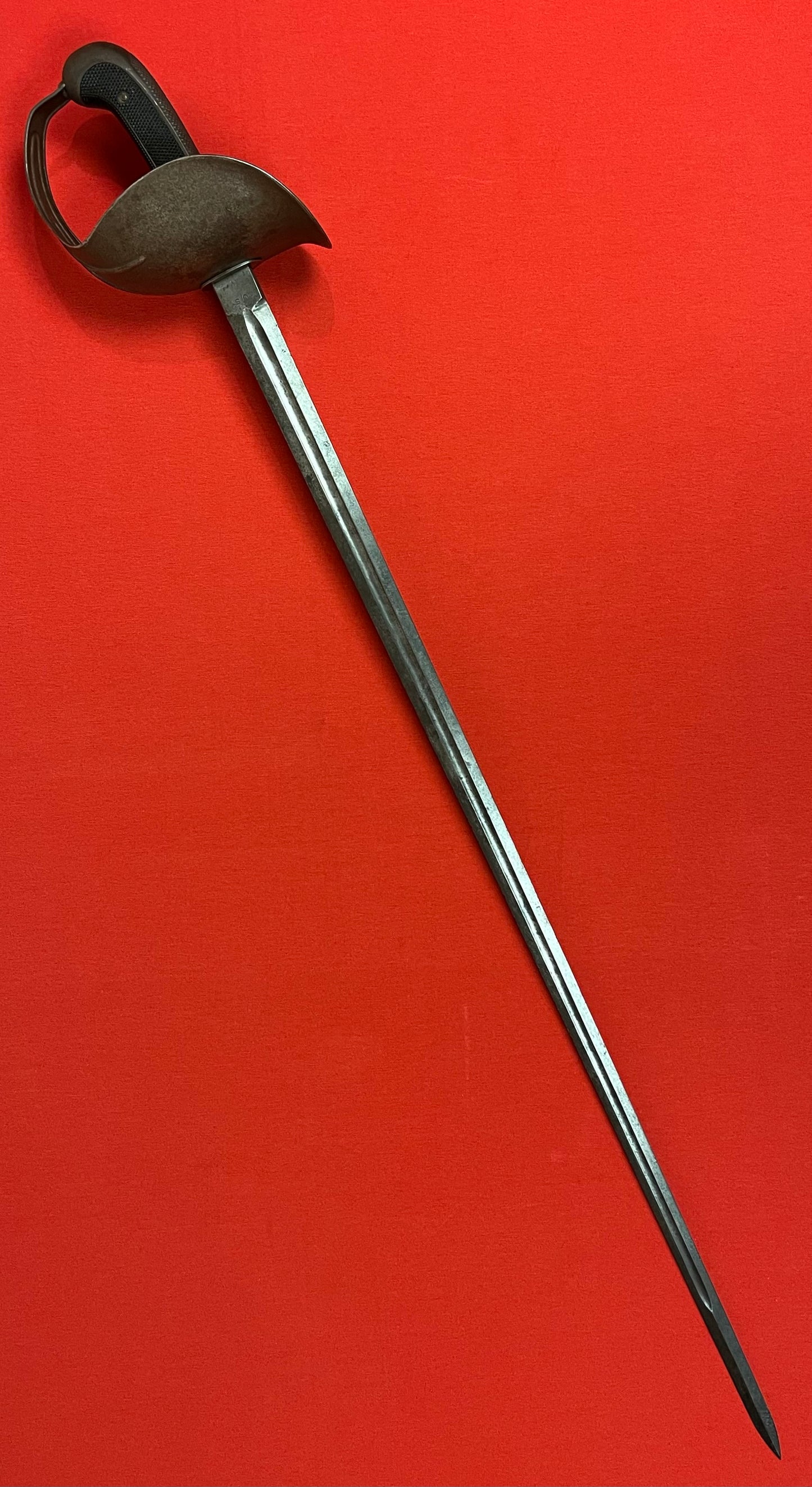Original U.S. WWI Model 1913 Cavalry Saber “Patton” Sword by L.F. & C. - Dated 1918
Original U.S. WWI Model 1913 Cavalry Saber “Patton” Sword by L.F. & C. - Dated 1918
Couldn't load pickup availability
WWI production Model 1913 Cavalry Saber. Unlike most we have seen, it was not made by Springfield Armory, but instead by private contractor Landers, Frary & Clark (L.F. & C.) of New Britain, CT., who also made the 1917 and Mark 1 pattern "Trench" knuckle knives. This example is marked on the ricasso with:
U.S.
(Eagle)
NO12
and on the reverse with:
L.F. & C.
(Flaming Bomb)
1918
Harder to find variation
Wonderful overall patina, a few nicks on the cutting edge from active engagement, some staining and general wear from age. The heavy steel guard is in good shape, as is the grip. (No Scabbard)
Overall a really nice example of the iconic Patton Saber, ready to display!
More on the Model 1913 Cavalry Sword "Patton Saber"
The sword was originally designed for the U.S. Army by Second Lieutenant (later General) George S. Patton Jr. in 1913. It has a large, basket-shaped hilt mounting a straight, double-edged, thrusting blade designed for use by light cavalry. Patton's 1914 manual "Saber Exercise" outlined a system of training for both mounted and foot use of the sword. Patton suggested the revision from a curved sword edge and cutting technique to a thrusting style of attack.
This sword features a 35 inch long blade that tapers toward the point with a deep central fuller running from the ricasso to within approx. 5.00 inches of the point. The blade is double-edged.
The grip is made of steel with a crosshatched surface for better grip. The top of the grip just behind the guard has a recessed area for resting the thumb. The pommel is smooth and convex. There is a screw through the pommel cap and two lateral screws holding the grip together. The guard is made of a single heavy sheet of steel molded into a full basket with three ridges in the area of the knucklebow.
The Model 1913 Cavalry Saber, commonly referred to as the Patton Saber, was a cavalry saber designed for the U.S. Army by Second Lieutenant (later General) George S. Patton in 1913. Patton suggested the revision from a curved sword and edge and cutting technique to a thrusting style of attack, following his extensive training in France.
It had a large, basket-shaped hilt mounting a straight, double-edged, thrusting blade designed for use by light cavalry. Although officially designated a saber, it lacks the curved edge typical of many models of saber.
This weapon, the last saber issued to U.S. cavalry, was never used as intended. At the beginning of U.S. involvement in World War I, several American cavalry units armed with sabers were sent to the front, but they were held back. The character of war had changed, making horse-mounted troops easy prey for enemy troops equipped with Gewehr 98 rifles and MG08 machine guns. Those cavalrymen who saw combat did so dismounted, using their horses only to travel similar to mounted infantry. Patton instead adapted his style of move forward and attack technique to his use of tanks in battle. This became his trademark combat style in World War II.
History
The saber is traditionally the weapon of the U.S. Cavalry; the 1913 Cavalry saber design replaced the Model 1906 Light Cavalry Saber ("Ames" saber), which itself was little changed from the Model 1860 Light Cavalry Saber. Patton designed the saber when he was Master of the Sword at the Mounted Service School; unlike earlier revisions of cavalry sabers, however, the 1913 saber was a complete redesign.
Following the 1912 Olympics in Stockholm, Patton traveled with his family to Dresden, Berlin, and Nuremberg. Seeking the greatest swordsman in Europe to study with, Patton was told the "beau sabreur" of the French Army would be the one. Adjutant M. Cléry was a French "master of arms" and instructor of fencing at the Cavalry School at Saumur. Patton went to Saumur to undergo an intense study with the master. Upon his return, Patton wrote a report on his sword studies that was revised for the Army and Navy Journal.Patton's first article for the well-known Cavalry Journal appeared in the March 1913 issue. In the summer of 1913, following his advising the Ordnance Department on sword redesign, Patton was allowed to return to Saumur to study once again under Cléry. Patton was next assigned to the Mounted Service School at Fort Riley, Kansas, as a student and "Master of the Sword", the top instructor in a new course in swordsmanship. It was here he wrote two training manuals in mounted and unmounted swordsmanship, "Saber Exercise 1914", and "Diary of the Instructor in Swordsmanship".
Design
The design was influenced by the French heavy cavalry sword of the Napoleonic Wars as well as French cavalry doctrine that emphasized the use of the point over the edge and is similar to the British Pattern 1908 and 1912 cavalry swords.
The Model 1913 saber features a large, basket-shaped hilt mounting a straight, double-edged, thrusting blade designed for use by heavy cavalry. It was designed in accordance with Patton's system of swordsmanship, which was published by the War Department as the 1914 Saber Exercise manual, and which emphasized the use of the point over the edge.
Use
According to KJ Parker, Patton's saber was light, slim, exceptionally ergonomic and well-balanced – in short, "more or less perfect, the best sword ever issued to an army. Amberger, on the other hand, considered the weapon to be poorly suited for the cavalry use intended, since at the speed of a cavalry charge, a thrust that transfixed an opponent could not be withdrawn quickly enough, and thus the attacker must either abandon his blade, break his wrist or dislocate his sword arm by holding on to it, or risk worse consequences: "At worst, his dead opponent would drag him off his own horse—making him an unarmed foot soldier in an ocean of falling saber blades and trampling hooves."
Patton's 1914 manual "Saber Exercise 1914" outlined a system of training for both mounted and on-foot use of the saber. Patton's thoughts were expressed in his 1913 report "The Form and Use of the Saber". He expanded on his "Saber Exercise 1914" manual the next year, at the request of his students at the Mounted Service School in Fort Riley, Kansas, with the publication of "Diary of the Instructor in Swordsmanship".
I
Share
